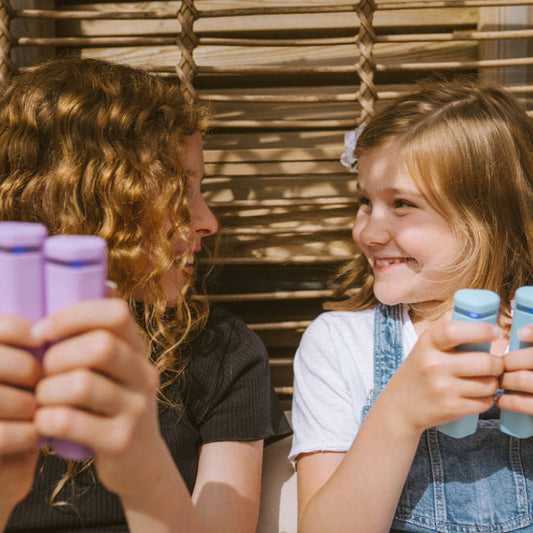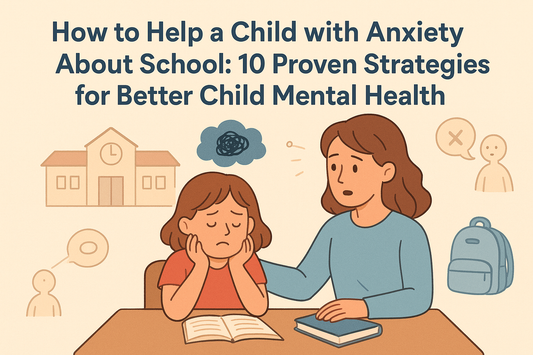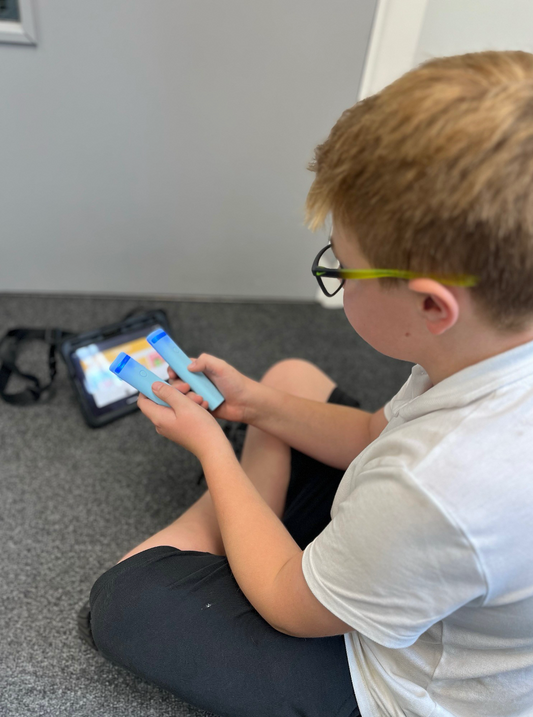Why Mindfulness is So Hard for Kids with ADHD - and What Actually Helps

Mindfulness is everywhere. It’s in classrooms, parenting books, therapy sessions - and for good reason. It’s been shown to reduce stress, improve focus, and support emotional regulation. But if you’ve ever tried traditional mindfulness techniques with a child who has ADHD, you’ll know: it’s not always as simple as “just take a deep breath.”
At Stix, we hear it all the time: “He gets bored and walks away.”
“She ends up even more frustrated after trying to meditate.”
So why is mindfulness - something so widely recommended - often so difficult for kids with ADHD?
1. Stillness is uncomfortable
Most traditional mindfulness practices assume stillness. They often begin with instructions like “sit quietly,” “close your eyes,” or “notice your breath.” But for many children with ADHD, stillness isn’t calming - it’s distressing. Their bodies crave movement and stimulation. Being told to stop moving can feel like being asked to go against their nature.
2. Boredom is the enemy
The ADHD brain seeks novelty, engagement, and quick feedback. That means slow-paced or repetitive activities (like many guided meditations) just don’t hold attention.
Instead of promoting calm, they can lead to more restlessness, or a total shutdown. If a mindfulness activity isn’t interesting right away, chances are your child will mentally check out (or physically walk off!).
3. Overwhelm can increase
Mindfulness is meant to reduce anxiety - but if not adapted properly, it can actually heighten it.
Long silences, vague instructions, or environments with too many sensory distractions (bright lights, background noise, uncomfortable seating) can overwhelm kids with ADHD. Instead of helping them feel grounded, mindfulness becomes another challenge to navigate.
So, what does work?
The key is adaptation, not abandonment. Mindfulness can be incredibly effective for children with ADHD when it’s designed for their brains.
Here’s what makes the difference:
-
Short, structured sessions: 1–3 minutes can be enough.
-
Movement-friendly prompts: Walking, stretching, swaying, balancing - mindfulness doesn’t need to be still.
-
Sensory-friendly tools: Visual cues, calming sounds, or tactile elements help keep kids engaged.
-
Clear, playful instructions: Language that’s fun and simple encourages participation.
This is exactly why we created Stix.
Our light-up remotes and interactive audio prompts bring mindfulness to life — in a way that’s engaging, playful, and built for neurodivergent kids. No pressure to sit still. No long silences. Just moments of calm, made fun.
Our favourite ADHD-friendly activities
At Stix, we’ve designed every activity with neurodivergent brains in mind — and some are especially effective for children with ADHD:
-
Surfing
Kids gently sway side to side like they’re riding a surfboard, while tuning into how their body feels in motion. It’s a great way to channel excess energy into mindful movement and build body awareness.
-
Balance
This activity invites children to stay very still — but only for short bursts. In between, they’re encouraged to shake off their energy. It’s a playful way to practise self-regulation without overwhelm.
-
Snow Angel
A sensory take on body scanning, where kids lie down and move their arms and legs like they’re making a snow angel. As they move, they’re guided to notice how different parts of their body feel, grounding them through motion.
These activities meet kids where they are: playful, physical, and sensory — creating a version of mindfulness that actually works for them.



